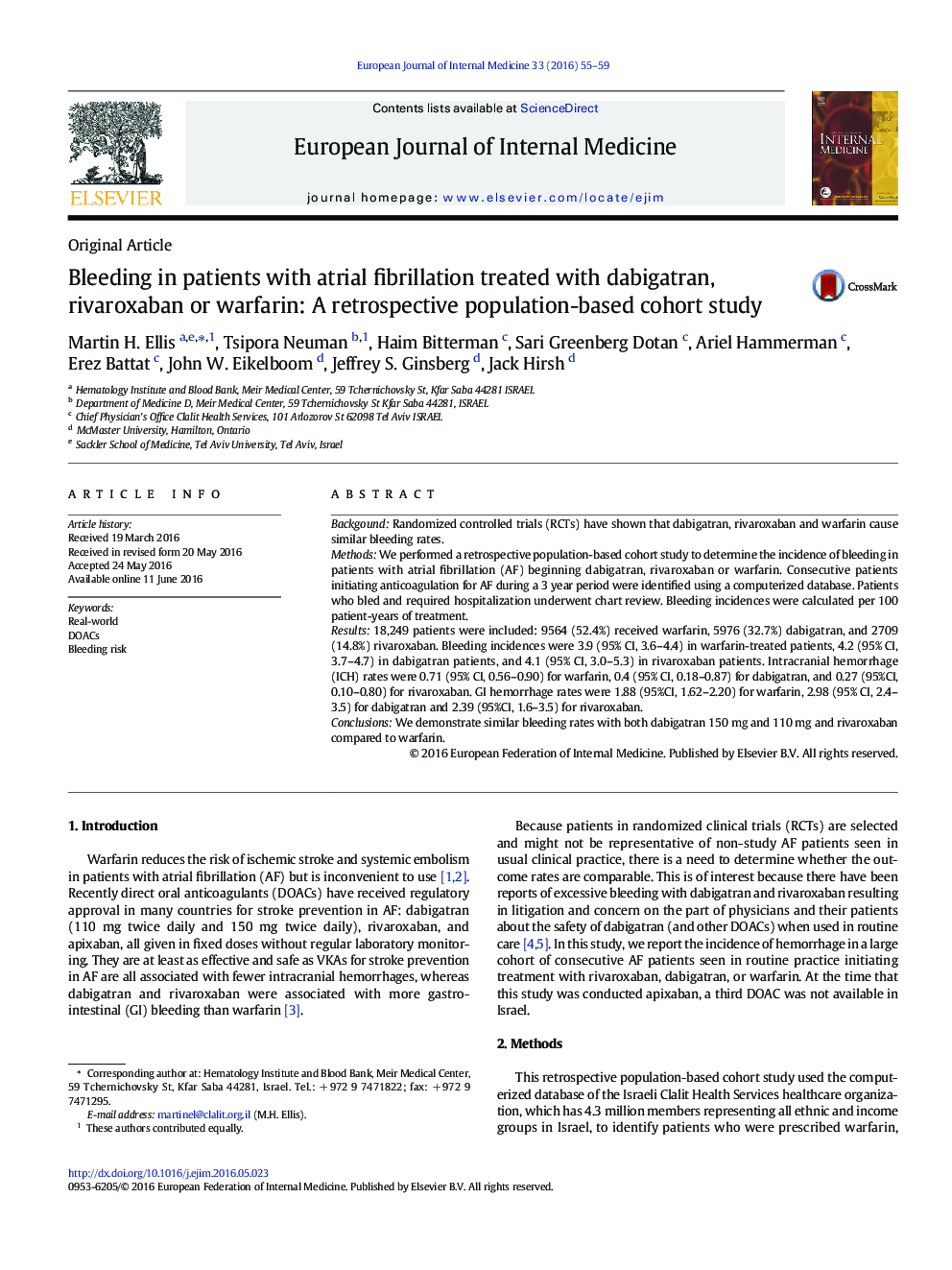| Article ID | Journal | Published Year | Pages | File Type |
|---|---|---|---|---|
| 3465832 | European Journal of Internal Medicine | 2016 | 5 Pages |
BackgoundRandomized controlled trials (RCTs) have shown that dabigatran, rivaroxaban and warfarin cause similar bleeding rates.MethodsWe performed a retrospective population-based cohort study to determine the incidence of bleeding in patients with atrial fibrillation (AF) beginning dabigatran, rivaroxaban or warfarin. Consecutive patients initiating anticoagulation for AF during a 3 year period were identified using a computerized database. Patients who bled and required hospitalization underwent chart review. Bleeding incidences were calculated per 100 patient-years of treatment.Results18,249 patients were included: 9564 (52.4%) received warfarin, 5976 (32.7%) dabigatran, and 2709 (14.8%) rivaroxaban. Bleeding incidences were 3.9 (95% CI, 3.6–4.4) in warfarin-treated patients, 4.2 (95% CI, 3.7–4.7) in dabigatran patients, and 4.1 (95% CI, 3.0–5.3) in rivaroxaban patients. Intracranial hemorrhage (ICH) rates were 0.71 (95% CI, 0.56–0.90) for warfarin, 0.4 (95% CI, 0.18–0.87) for dabigatran, and 0.27 (95%CI, 0.10–0.80) for rivaroxaban. GI hemorrhage rates were 1.88 (95%CI, 1.62–2.20) for warfarin, 2.98 (95% CI, 2.4–3.5) for dabigatran and 2.39 (95%CI, 1.6–3.5) for rivaroxaban.ConclusionsWe demonstrate similar bleeding rates with both dabigatran 150 mg and 110 mg and rivaroxaban compared to warfarin.
